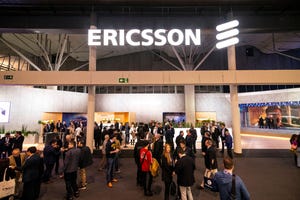What's Next for Neophotonics?
The optical components specialist had its world turned upside down by the US ban on selling tech to Huawei. Can it regain its feet? Might it even get swallowed up in further components sector consolidation?
June 4, 2019

It's been a very tough month for Neophotonics, the highly respected developer and supplier of optical networking components.
At the start of May, the company, which specializes in PIC (photonic integrated circuit)-based coherent optical receivers, lasers and switches, was on track to report revenues of around $90 million and gross margins of 23% to 27% for its second quarter ending June 30: Its stock was trading at $6.86, giving it a market valuation of about $320 million.
Then the Trump administration dropped a bombshell: It issued an executive order that in turn lead to the US Commerce Department indicating it would be "adding Huawei... and its affiliates to the Bureau's entity list." US companies cannot ship technology to anyone named on that list without obtaining a license from the Commerce Department's Bureau of Industry and Security, which would deny any requests if it believes the sale is harmful to US interests. Huawei was added to the entity list on May 21, though the action came into force on May 16.
The move impacted multiple companies but for Neophotonics the Huawei ban is a disaster: In the first three months of 2019, the Chinese vendor (including its affiliate, HiSilicon Technologies) had accounted for 49% of Neophotonics's total revenues of $79.4 million. Overnight, half its business was under severe threat.
Not surprisingly, the company's stock took a haircut: In the past month it has lost about 40% of its value and currently trades at $4.45, giving it a market valuation of $206 million. (Note: Its share price is up by a whopping 11% today, suggesting improving confidence in its ongoing trading position.)
As a result of the ban on sales to Huawei, the components specialist had to reassess its ongoing business, and on May 23 it issued a profit warning for the second quarter: Instead of revenues in the $88 to $93 million range it now expects $75 to $80 million, while its expected gross margin for the quarter is now 10% to 14%.
Like others, Neophotonics has been given a temporary reprieve, to ease the immediate blow to its business: The US Bureau of Industry and Security granted the company a temporary license to ship "certain categories of products to Huawei for a period of 90 days." It's even possible that some new orders from Huawei might even be able to be fulfilled, which would improve the expected second quarter financials.
But uncertainty rules and Neophotonics is having to restructure its business. "Our objective is now to move rapidly to lower manufacturing and operating expense levels to be cash positive at a lower revenue level," stated CEO Tim Jenks in the company's profit warning statement.
Little wiggle room
The company has few options other than to tighten its belt and see if US/China relations thaw and Huawei's name gets taken off the entity list. Neophotonics has bet its future on delivering optical components for medium- and long-distance high-speed networks (400G/600G and beyond) that are then used by module and systems vendors to build their products, having sold its short-range and lower-speed business in 2017.
But this focus has made the company vulnerable in certain situations, like the one we see now, and that can only be unsettling for all of its key customers: Neophotonics is very reliant on a small number of companies, with its top five customers generating 87% of its total sales last year. While Huawei is by far its biggest customer, generating 46% of total revenues in 2018, Ciena accounted for 24%, a very sizeable chunk. Its other main customers are Cisco, Nokia (the former Alcatel-Lucent optical business), Fiberhome (another Chinese systems company) and Acacia, the digital signal processor (DSP) and optical module specialist that has become a real force in the 400G market.
Huawei, of course, will be hoping it can continue to do as much business as possible with Neophotonics so that its 400G metro and long-haul optical systems business isn't unduly damaged (remember as well that Huawei had been preparing for interference in its supply chain and says it had stockpiled components).
But Ciena, which is hoping to capitalize on Huawei's current travails, will certainly not want Neophotonics to suffer operational difficulties -- it doesn't want its supply chain interrupted just as it's looking to further boost its market share: Ciena is set to announce its latest financials on June 6.
The worst-case scenario for Neophotonics, Huawei and Ciena is that the ban on sales to Huawei lasts a long time and impacts the components company so badly that it spirals out of control and goes into administration. That would be a disaster for all three companies.
But that's an unlikely scenario, says Andrew Schmitt, a highly respected optical industry analyst, and founder of Cignal AI, who is steeped in the industry's technical and business developments.
He notes that Huawei is a "very important company to China," and that the potential impact of an ongoing ban on US sales to Huawei would result in economic consequences that either the US nor China would want. "Logically, and based on precedent, I don't see this ban lasting more than a few months, after which it would largely be back to business as usual. Huawei is very reliant on US technology. We have seen this movie before with ZTE."
Schmitt adds that, even in the worst-case scenario, Neophotonics has enough important business to continue as a going concern with its other customers, particularly Ciena and Acacia.
Does this make Neophotonics an M&A target?
So might someone swoop on Neophotonics while its valuation is low? Is it vulnerable to an aggressive takeover move?
Schmitt dismisses the idea that the company's board would even entertain a lowball offer. He believes the company has value as a takeover target, but not at anything near its current market valuation. "The value of Neophotonics to companies like Ciena and Acacia goes beyond its P&L," he notes.
He isn't the only one who believes that, at some point, a deal might happen. But only when the political and economic environment is calmer. In March this year, analyst James Kisner wrote in Light Reading that Neophotonics is "one of the last buyable [optical] public companies, with an enterprise value below $400 million," but, with some prescience, Kisner added that its "heavy exposure to China gives any potential buyer pause, particularly in light of an ambiguous outlook for US-China trade relations."
Who might be interested? Components companies are usually acquired by their peers -- recent examples include Lumentum buying Oclaro, II-VI in the process of acquiring Finisar -- but who has the appetite and strategic will to make such a move? There is strategic sense in Acacia bringing its key laser supplier on board, notes Schmitt, while Ciena might also see value in such a move in the future.
Of course, Huawei would probably love to acquire its key components supplier… but the earth would freeze over before the US authorities would allow that to happen.
In the meantime, Neophotonics is hunkering down and looking to ride out the storm. The company declined to comment on its plans to reduce costs, say whether it is in talks with any third parties with regards to M&A discussions, or comment on whether it has received any recent takeover offers.
— Ray Le Maistre, Editor-in-Chief, Light Reading
Read more about:
AsiaYou May Also Like










